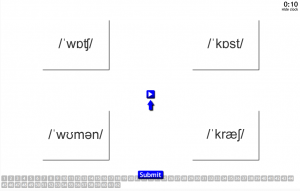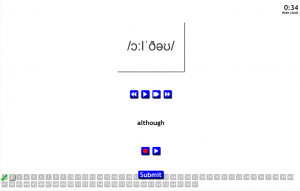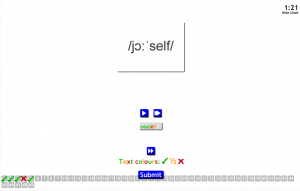I’ve just created some new MILAs Learning Content Cartridges (LCCs) focused on the International Phonetic Alphabet (IPA) and I cordially invite you to try them out and see how well you know the British English subset of the IPA. If you’re from north America or have little experience with British English pronunciation, the vowel sounds should be a particular challenge and it may give you some insights into how learners experience using the IPA.
By the way, if you’re a British English speaker and would like to challenge your abilities with north American pronunciation, you could try Dr. Ron Thomson‘s free online phonemic awareness training system, English Accent Coach. I tried it and my knowledge and awareness of Canadian vowels was terrible!
Which MILAs have you used?
For your entertainment and interest, I’ve deployed three examples of different MILAs. Each one loads a different LCC to generate IPA focused learning interactions which have British English audio recordings and phonetic transcriptions of single words. All the vocabulary used is what we would normally expect learners at around level CEFR B1 (Intermediate) and above to have acquired reasonably well. The combinations are as follows:
Listen and select MILA + Short vowels LCC
Listen and repeat MILA + Diphthongs LCC
Look and describe MILA + Non-paired voiced consonants LCC
What are Learning Content Cartridges?
Learning Content Cartridges contain learning interaction data, in the form of SMIL XML files (a W3C standard format for education and multimedia presentations) and media, in the form of images and MP3 audio files, and are loaded into MILAs to generate learning interactions. Learning Content Cartridges are open format, so they can easily be edited and adapted, and are interchangeable with different applications that can read them, in this case MILAs.


